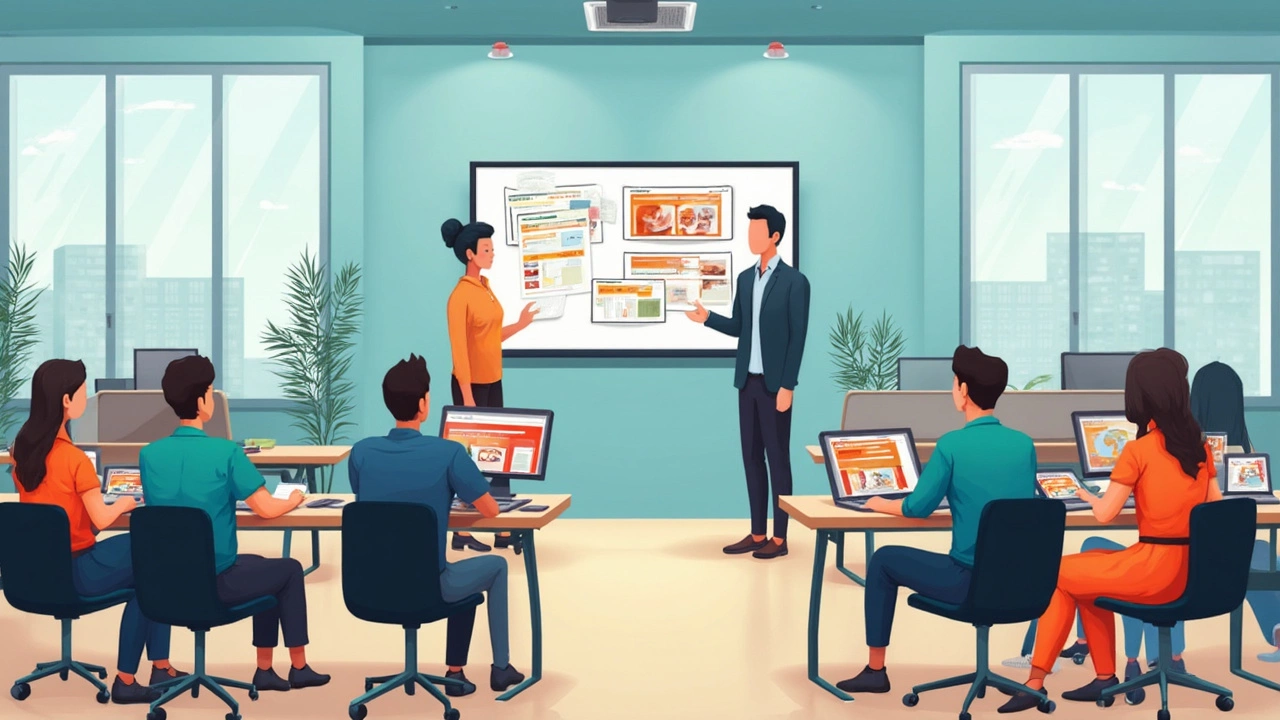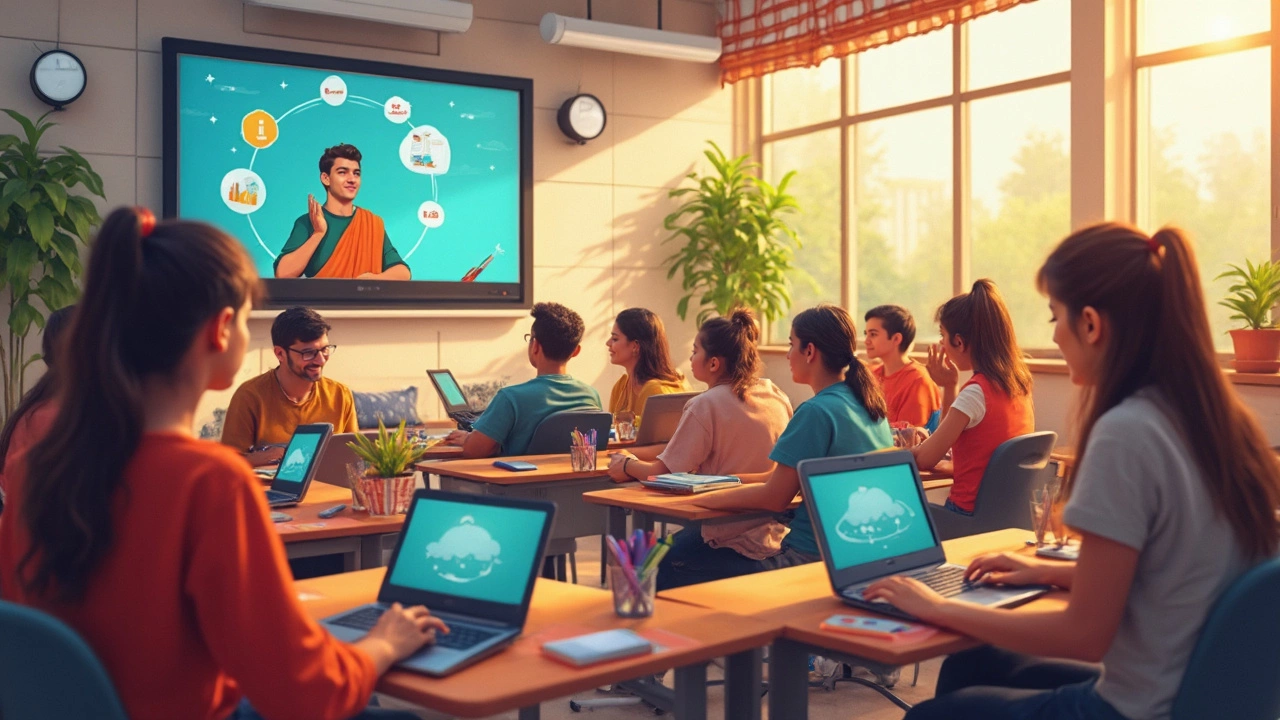Remember the days when learning meant squeezing into a classroom and hoping you got the teacher with the good jokes? Fast forward to today, and you’ll find that even traditional education is playing catch-up in a world obsessed with digital convenience. The stat that blows my mind: by 2025, global eLearning will hit a market value of $400 billion. In New Zealand alone, even before the pandemic, almost 40% of businesses had adopted some form of online staff training. There’s no turning back for eLearning—only questions about how, not if, we use it.
But sorting out all the ways you can learn online gets tricky. Sometimes you’re tuning in for a live session. Sometimes you’re watching replays at midnight in your pajamas with some chocolate biscuits. And sometimes, you’re doing a little bit of both. That’s because eLearning actually comes in three main flavors, and knowing the difference can completely change the way you approach everything from upskilling at work to picking the best course for your goals.
Synchronous eLearning: Real-Time, Real Connections
When people talk about eLearning, they often imagine sitting alone in front of a screen. But synchronous eLearning breaks that stereotype. Here, everything happens live. There’s a set time, a group of learners, and an instructor guiding everyone through topics together—think Zoom lectures, live webinars, or virtual classrooms. The magic is the real-time interaction. If you’re anxious about drifting off or getting distracted, synchronous sessions bring that sense of shared purpose. You can ask questions, join group chats, or even break into smaller discussion rooms with a click. The University of Auckland reported a sharp jump in live online lecture attendance during the first lockdown—a whopping 62%—proving that people still crave that live, communal learning vibe, even when it’s digital.
Teachers and trainers swear by synchronous eLearning for building momentum and motivation. Imagine learning a new coding skill while you code along with fifty others, each person sharing their hiccups and hacks. Or picture a live Q&A winding up with answers not just from the teacher, but from students sharing their own workarounds. That kind of shared energy is precious. If you’re the type of person who thrives on routine (need a set time to show up) and social engagement (hate talking to a void), synchronous eLearning ticks the boxes.
Of course, it comes with caveats. There’s the time zone problem, especially if the instructor is halfway around the world (yep, I’ve been that person waking up at 3am for a workshop from London). If you miss a session, you’re out of luck unless there’s a recording—which brings you back to asynchronous territory. Plus, not everyone’s internet connection wants to cooperate. In New Zealand’s rural areas, dodgy broadband is still a constant headache, making real-time participation tough. But if you can make the timing work and want to feel part of a learning community, synchronous eLearning offers that unique blend of structure and social interaction that few other online options provide.

Asynchronous eLearning: Learning When You Want, How You Want
If you’ve ever binge-watched YouTube tutorials or powered through a digital course at your own pace, you’re already living in the world of asynchronous eLearning. Here, the content is always there for you—no set times, no pressure. Access a lesson at midnight or on a lazy Sunday afternoon, pause when the dog needs walking, rewind the tricky bits, and skip what you already know. You decide when and how you learn. It’s no surprise that the biggest online platforms—think Coursera, Udemy, or Teachable—make most of their money from courses you can start anytime, on any device, and fit easily into a crazy-busy life.
This type of eLearning suits the self-motivated. There’s no one email-bombing you about attendance or participation. You set the pace. That’s why a whopping 70% of Kiwi organizations who invest in eLearning opt for on-demand content over live sessions. For professionals juggling work and family, asynchronous options are a lifesaver. They also make it easy to revisit material—especially useful if you missed something or want to brush up on a tricky part later on.
There’s a downside too. If you’re a natural procrastinator, the lack of scheduled classes can turn a five-week course into a forgotten new year’s resolution. And, let’s be honest, discussion forums and comment threads don’t always fill the gap left by live conversations. Still, course creators have gotten clever. Many now add quizzes, badges, and even little nudges via email to keep you on track. Some asynchronous courses combine recorded videos with monthly live Q&A sessions—hybrid models that aim to deliver the best of both worlds. Want a tip? Before signing up, check the course format and support system. Good providers offer responsive help, so you’re never stuck staring at a tough assignment with no rescue in sight.

Blended eLearning: Mixing, Matching, and Getting Personal
The real game-changer in eLearning is blending both worlds. Blended eLearning (sometimes called hybrid learning) combines the fixed structure and peer connection of synchronous eLearning with the flexibility and convenience of asynchronous content. So, you might watch pre-recorded lectures during the week, then join a live discussion or workshop on Fridays. The result? A personalized *learning journey* where structure and freedom, personal pacing and real-time support, all work together—just how modern learners want.
This isn’t just a theoretical model. Many universities in Auckland, like AUT and Massey, use blended formats to reach more students. In Australia and New Zealand, professional training programs are going the same way. For example, leadership programs often include asynchronous eModules and a handful of scheduled, live group coaching calls. Learners can polish off the content when they want, then come together to debate real-world cases or get feedback. Studies in the last three years consistently show that retention and course completion rates jump by up to 30% with blended learning compared to sticking with just one mode.
The beauty of the blended format is adaptability. If someone needs more time with the material, asynchronous options are always waiting. If issues crop up, there’s always a live session around the corner to clear doubts or spark deeper discussion. This model is perfect for teams or classrooms where skills, confidence, and schedules differ wildly. Teachers can set a basic pace with recorded modules and then flexibly add live workshops for tackling tough topics or fostering teamwork. Unsure if you’ll need extra support? The blended format means you’re never boxed in.
Tuning into your own learning style matters here. Visual learners can soak up video content; verbal types get value from live debate. Even introverts and extroverts get something from a program that lets them pick and choose where (and how) they shine. For businesses, the blended approach takes away the headache of scheduling everyone at once while still building that crucial team spirit. And for individuals, it means you’re never stuck with a format you can’t stand. If you’re looking to create or choose an eLearning course, blending asynchronous depth with synchronous energy is as close as it gets to a tailor-made experience online.
Picking the right eLearning format isn’t about following the trends. It’s about finding what matches your goals, energy levels, and daily schedule. If you need the community buzz, go live. If you want freedom, go async. If you’re chasing both support and flexibility, blended learning is your ticket. The best part? Whatever you choose, the doors to knowledge have never been wider open—or more inviting—than they are right now.

